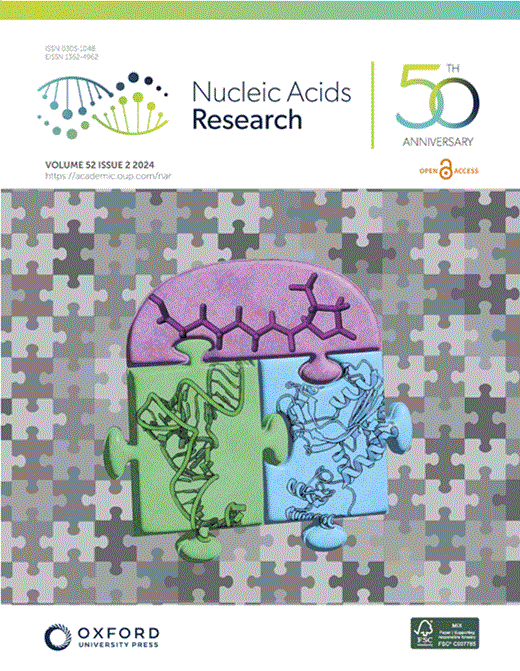An archaeal chronic virus escapes the immunity of prokaryotic Argonaute.
IF 16.6
2区 生物学
Q1 BIOCHEMISTRY & MOLECULAR BIOLOGY
引用次数: 0
Abstract
Bacteria and archaea use diverse defense systems to defeat their viruses, and in turn, viruses develop anti-defense strategies to overcome the host immunity. Catalytically inactive prokaryotic Argonaute proteins constitute a family of defense systems that kill infected cells to halt viral propagation, whereas how viruses escape the pAgo (prokaryotic Argonaute) immunity remains unknown. Here, we demonstrate that an archaeal chronic virus SMV1a can evade the immunity of Saccharolobus islandicus Argonaute (SiAgo) system through early progeny release. Prompt expression of virion proteins post-infection may facilitate the early progeny release. Further, we evolved SMV1a to overcome SiAgo immunity and identified that the insertion of a repeat element drives SMV1a resistance to the SiAgo immunity at the cost of inefficient progeny production in SiAgo-deficient cells. The inserted repeat is rapidly lost when the evolved SMV1a is replicated in SiAgo-deficient cells, and efficient progeny production can be restored. The data suggest that the reversible repeat insertion adapts SMV1a to hosts with different immune backgrounds. Together, our data provide new insights into the anti-defense mechanisms of an archaeal chronic virus.一种古细菌慢性病毒逃脱了原核生物阿尔戈纳特的免疫。
细菌和古细菌使用不同的防御系统来击败它们的病毒,反过来,病毒发展出反防御策略来克服宿主的免疫。催化无活性的原核Argonaute蛋白构成了一个防御系统家族,可以杀死感染细胞以阻止病毒繁殖,而病毒如何逃脱pAgo(原核Argonaute)免疫仍不清楚。在这里,我们证明了一种古细菌慢性病毒SMV1a可以通过早期的子代释放来逃避岛Saccharolobus islandicus Argonaute (SiAgo)系统的免疫。感染后病毒粒子蛋白的迅速表达可能有助于早期子代释放。此外,我们进化SMV1a以克服SiAgo免疫,并发现重复元件的插入驱动SMV1a抵抗SiAgo免疫,代价是SiAgo缺陷细胞中低效的后代产生。当进化的SMV1a在siago缺陷细胞中复制时,插入的重复序列迅速丢失,并且可以恢复有效的后代生产。这些数据表明,可逆的重复插入使SMV1a适应不同免疫背景的宿主。总之,我们的数据为古细菌慢性病毒的抗防御机制提供了新的见解。
本文章由计算机程序翻译,如有差异,请以英文原文为准。
求助全文
约1分钟内获得全文
求助全文
来源期刊

Nucleic Acids Research
生物-生化与分子生物学
CiteScore
27.10
自引率
4.70%
发文量
1057
审稿时长
2 months
期刊介绍:
Nucleic Acids Research (NAR) is a scientific journal that publishes research on various aspects of nucleic acids and proteins involved in nucleic acid metabolism and interactions. It covers areas such as chemistry and synthetic biology, computational biology, gene regulation, chromatin and epigenetics, genome integrity, repair and replication, genomics, molecular biology, nucleic acid enzymes, RNA, and structural biology. The journal also includes a Survey and Summary section for brief reviews. Additionally, each year, the first issue is dedicated to biological databases, and an issue in July focuses on web-based software resources for the biological community. Nucleic Acids Research is indexed by several services including Abstracts on Hygiene and Communicable Diseases, Animal Breeding Abstracts, Agricultural Engineering Abstracts, Agbiotech News and Information, BIOSIS Previews, CAB Abstracts, and EMBASE.
 求助内容:
求助内容: 应助结果提醒方式:
应助结果提醒方式:


